Planned hospital birth compared with planned home birth for pregnant women at low risk of complications
- PMID: 36884026
- PMCID: PMC9994459
- DOI: 10.1002/14651858.CD000352.pub3
Planned hospital birth compared with planned home birth for pregnant women at low risk of complications
Abstract
Background: Observational studies of increasingly better quality and in different settings suggest that planned hospital birth in many places does not reduce mortality and morbidity but increases the frequency of interventions and complications. Euro-Peristat (part of the European Union's Health Monitoring Programme) has raised concerns about iatrogenic effects of obstetric interventions, and the World Health Organization (WHO) has raised concern that the increasing medicalisation of childbirth tends to undermine women's own capability to give birth and negatively impacts their childbirth experience. This is an update of a Cochrane Review first published in 1998, and previously updated in 2012.
Objectives: To compare the effects of planned hospital birth with planned home birth attended by a midwife or others with midwifery skills and backed up by a modern hospital system in case a transfer to hospital should turn out to be necessary. The primary focus is on women with an uncomplicated pregnancy and low risk of medical intervention during birth. SEARCH METHODS: For this update, we searched Cochrane Pregnancy and Childbirth's Trials Register (which includes trials from CENTRAL, MEDLINE, Embase, CINAHL, WHO ICTRP, and conference proceedings), ClinicalTrials.gov (16 July 2021), and reference lists of retrieved studies.
Selection criteria: Randomised controlled trials (RCTs) comparing planned hospital birth with planned home birth in low-risk women as described in the objectives. Cluster-randomised trials, quasi-randomised trials, and trials published only as an abstract were also eligible.
Data collection and analysis: Two review authors independently assessed trials for inclusion and risk of bias, extracted data, and checked the data for accuracy. We contacted study authors for additional information. We assessed the certainty of the evidence using the GRADE approach. MAIN RESULTS: We included one trial involving 11 participants. This was a small feasibility study to show that well-informed women - contrary to common beliefs - were prepared to be randomised. This update did not identify any additional studies for inclusion, but excluded one study that had been awaiting assessment. The included study was at high risk of bias for three out of seven risk of bias domains. The trial did not report on five of the seven primary outcomes, and reported zero events for one primary outcome (caesarean section), and non-zero events for the remaining primary outcome (baby not breastfed). Maternal mortality, perinatal mortality (non-malformed), Apgar < 7 at 5 minutes, transfer to neonatal intensive care unit, and maternal satisfaction were not reported. The overall certainty of the evidence for the two reported primary outcomes was very low according to our GRADE assessment (downgraded two levels for high overall risk of bias (due to high risk of bias arising from lack of blinding, high risk of selective reporting and lack of ability to check for publication bias) and two levels for very serious imprecision (single study with few events)). AUTHORS' CONCLUSIONS: This review shows that for selected, low-risk pregnant women, the evidence from randomised trials to support that planned hospital birth reduces maternal or perinatal mortality, morbidity, or any other critical outcome is uncertain. As the quality of evidence in favour of home birth from observational studies seems to be steadily increasing, it might be just as important to prepare a regularly updated systematic review including observational studies as described in the Cochrane Handbook for Systematic Reviews of Interventions as to attempt to set up new RCTs. As women and healthcare practitioners may be aware of evidence from observational studies, and as the International Federation of Gynecology and Obstetrics and the International Confederation of Midwives collaboratively conclude that there is strong evidence that out-of-hospital birth supported by a registered midwife is safe, equipoise may no longer exist, and randomised trials may now thus be considered unethical or hardly feasible.
Copyright © 2023 The Cochrane Collaboration. Published by John Wiley & Sons, Ltd.
Conflict of interest statement
Ole Olsen: In the 36 months prior to the RevMan file was made available for us to work on for our updated review and until our draft was accepted for publication I may have published opinions relevant to place of birth in two medical journals (
Jette A Clausen: In the 36 months prior to the RevMan file was made available for us to work on for our updated review and until our draft was accepted for publication I may have published opinions relevant to place of birth in one medical journal (
Figures


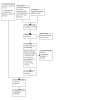

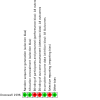
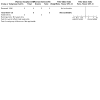

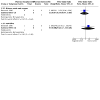

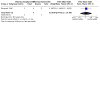
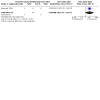
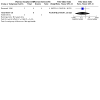
Update of
-
Planned hospital birth versus planned home birth.Cochrane Database Syst Rev. 2012 Sep 12;9(9):CD000352. doi: 10.1002/14651858.CD000352.pub2. Cochrane Database Syst Rev. 2012. Update in: Cochrane Database Syst Rev. 2023 Mar 8;3:CD000352. doi: 10.1002/14651858.CD000352.pub3. PMID: 22972043 Free PMC article. Updated.
References
References to studies included in this review
References to studies excluded from this review
Bateman 1994 {published data only}
-
- Bateman DA, O'Bryan L, Nicholas SW, Heagarty MC. Outcome of unattended out-of-hospital births in Harlem. Archives of Pediatric and Adolescent Medicine 1994;148:147-52. - PubMed
Berghs 1995 {published data only}
-
- Berghs G, Spanjaards E, Driessen L, Doesburg W, Eskes TS. Neonatal neurological outcome after low-risk pregnancies. European Journal of Obstetrics & Gynecology and Reproductive Biology 1995;62(2):167-71. - PubMed
Hendrix 2009 {published and unpublished data}
-
- Hendrix M, Van Horck M, Moreta D, Nieman F, Nieuwenhuijze M, Severens J, et al. Why women do not accept randomisation for place of birth: feasibility of a RCT in The Netherlands. BJOG: an international journal of obstetrics and gynaecology 2009;116(4):537-42; discussion 542-4. - PubMed
-
- Olsen O. Was the Dutch home birth trial properly registered and performed? BJOG: an international journal of obstetrics and gynaecology 2010;117(9):1162-3; author reply 1163. - PubMed
MacVicar 1993 {published data only}
-
- MacVicar J, Dobbie G, Owen Johnstone L, Jagger C, Hopkins M, Kennedy JS. Simulated home delivery in hospital: a randomised controlled trial. British Journal of Obstetrics and Gynaecology 1993;100:316-23. - PubMed
O'Connor 1986 {published data only}
-
- O'Connor ME, Addiego JE Jr. Use of oral vitamin K1 to prevent hemorrhagic disease of the newborn infant. Journal of Pediatrics 1986;108(4):616-9. [MEDLINE: ] [CN-00208837 - CCTR] - PubMed
Truffert 1998 {published data only}
-
- Truffert P, Goujard J, Dehan M, Vodovar M, Breart G. Outborn status with a medical neonatal transport service and survival without disability at two years. A population-based cohort survey of newborns of less than 33 weeks of gestation. European Journal of Obstetrics & Gynecology and Reproductive Biology 1998;79(1):13-8. [MEDLINE: ] [CN-00250599 - CCTR] - PubMed
Additional references
Abbasi 2022
-
- Abbasi K. A system reset for the campaign against too much medicine. BMJ 2022;377:o1466.
Alfirevic 2017
-
- Alfirevic Z, Devane D, Gyte GM, Cuthbert A. Continuous cardiotocography (CTG) as a form of electronic fetal monitoring (EFM) for fetal assessment during labour. Cochrane Database of Systematic Reviews 2017, Issue 2(2). Art. No: CD006066. [DOI: 10.1002/14651858.CD006066.pub3] - DOI
Armenakis 2002
-
- Armenakis AA, Harris SG. Crafting a change message to create transformational readiness. Journal of Organizational Change Management 2002;15(2):169-83. [DOI: 10.108/09534810210423080] - DOI
Begley 2011
Bekendtgørelse 2004
-
- Executive Order amending Executive Order on the transport of animals [Bekendtgørelse om ændring af bekendtgørelse om transport af dyr]. www.retsinformation.dk/eli/lta/2004/699 (accessed 5 February 2022).
Berghella 2008
-
- Berghella V, Baxter JK, Chauhan SP. Evidence-based labor and delivery management. American Journal of Obstetrics and Gynecology 2008;199(5):445-54. - PubMed
Bricker 2000
Brunton 2021
Carlisle 2017
-
- Carlisle JB. Data fabrication and other reasons for non-random sampling in 5087 randomised, controlled trials in anaesthetic and general medical journals. Anaesthesia 2017;72:944–52. - PubMed
Carman 2015
cascade‐of‐intervention‐chart 2022
-
- cascade-of-intervention-chart . birthinternational.com/product/cascade-of-intervention-chart/ (accessed 5 February 2022).
CEDAW 2010
-
- Concluding observations of the Committee on the Elimination of Discrimination against Women. United Nations CEDAW/C/CZE/CO/5 Convention on the Elimination of All Forms of Discrimination against Women. Distr.: General 22 October 2010 2010.
CEDAW 2020
-
- Decision adopted by the Committee under article 4 (2) (c) of the Optional Protocol, concerning communication No. 138/2018. United Nations CEDAW/C/75/D/138/2018. Convention on the Elimination of All Forms of Discrimination against Women. Distr.: General: 28 February 2020 2020.
Chalmers 1983
-
- Chalmers I. Scientific inquiry and authoritarianism in perinatal care and education. Birth 1983;10:151-66. - PubMed
Chalmers 1989
-
- Chalmers I, Enkin M, Keirse MJN, editor(s). Effective Care in Pregnancy and Childbirth. Oxford: Oxford University Press, 1989.
Changing Dojo 2016
-
- Changing Dojo, editor. Tips for change facilitation. medium.com/changingdojo/tips-for-change-facilitation-b164da71eb6d (accessed 25 December 2022).
Clarke 2021
Cleese 1983
-
- The Machine That Goes "Bing!". www.youtube.com/watch?v=wd9NQxIeAAc (accessed 6 February 2022).
Cochrane 1979
-
- Cochrane AL. 1931-1971: a critical review with particular reference to the medical profession. In: Teeling-Smith G, Wells N, editors(s). Medicines For The Year 2000. London: Office of Health Economics, 1979:2-12.
Cochrane 1989
-
- Cochrane AL. Foreword. In: Chalmers I, Enkin M, Keirse MJN, editors(s). Effective Care in Pregnancy and Childbirth. Oxford: Oxford University Press, 1989:viii.
Comeau 2018
Coxon 2017
-
- Coxon K, Chisholm A, Malouf R, Rowe R, Hollowell J. What influences birth place preferences, choices and decision-making amongst healthy women with straightforward pregnancies in the UK? A qualitative evidence synthesis using a ‘best fit’ framework approach. BMC Pregnancy and Childbirth 2017;17(1):103. - PMC - PubMed
Curtis 2006
-
- Curtis P, Ball L, Kirkham M. Why do midwives leave? (Not) being the kind of midwife you want to be. British Journal of Midwifery 2006;14(1):27-31.
Davis‐Floyd 2009a
-
- Davis-Floyd RE, Barclay L, Daviss BA, Tritten J. Introduction. In: Davis-Floyd RE, Barclay L, Daviss BA, Tritten J, editors(s). Birth Models That Work. University of California Press, 2009:1-30.
Davis‐Floyd 2009b
-
- Davis-Floyd RE, Barclay L, Daviss BA, Tritten J. Conclusion. In: Davis-Floyd RE, Barclay L, Daviss BA, Tritten J, editors(s). Birth Models That Work. University of California Press, 2009:441-62.
de Jonge 2013
de Jonge 2015
-
- Jonge A, Geerts CC, Goes BY, Mol BW, Buitendijk SE, Nijhuis JG. Perinatal mortality and morbidity up to 28 days after birth among 743 070 low-risk planned home and hospital births: a cohort study based on three merged national perinatal databases. BJOG: an international journal of obstetrics and gynaecology 2015;122(5):720-8. - PubMed
de Jonge 2021
-
- Jonge A, Dahlen HannHah, Downe S. ‘Watchful attendance’ during labour and birth. Sexual & Reproductive Healthcare 2021;28:100617. - PubMed
Downe 2013
D’Agostino 2003
-
- D'Agostino RB Sr, Massaro JM, Sullivan LM. Non-inferiority trials: design concepts and issues - the encounters of academic consultants in statistics. Statistics in Medicine 2003;22:169-86. [PMID: ] - PubMed
epidural‐flow‐chart‐cascade‐of 2022
-
- epidural-flow-chart-cascade-of. www.etsy.com/dk-en/listing/384506118/epidural-flow-chart-cascade-of (accessed 5 February 2022).
Eri 2015
-
- Eri Tine S, Bondas T, Gross MM, Janssen P, Green JM. A balancing act in an unknown territory: a metasynthesis of first-time mothers׳ experiences in early labour. Midwifery 2015;31(3):e58-e67. - PubMed
EURO‐PERISTAT 2008
-
- EURO-PERISTAT Project, with SCPE, EUROCAT, EURONEOSTAT. European Perinatal Health Report. www.europeristat.com/images/doc/EPHR/european-perinatal-health-report.pdf (accessed 7 November 2022).
Feeley 2015
-
- Feeley CL, Burns E, Adams E, Thomson G . Why do some women choose to freebirth? A meta-thematic synthesis, part one . Evidence Based Midwifery 2015;13(1):4-9.
Feeley 2016
FIGO and ICM 2012
-
- International Confederation of Midwives and International Federation of Gynecology and Obstetrics. Media release, 8th March 2012. www.internationalmidwives.org/Portals/5/jedfiles/120308%20ICM%20FIGO%20s... (accessed 23 August 2012).
Gates 2010
-
- Gates S. Cochrane Pregnancy and Childbirth Group: Methodological Guidelines. pregnancy.cochrane.org/sites/pregnancy.cochrane.org/files/uploads/Method....
Gates 2012
-
- Gates S. Cochrane Pregnancy and Childbirth Group - Methodological Guidelines. pregnancy.cochrane.org/sites/pregnancy.cochrane.org/files/public/uploads... (accessed 26 January 2022).
Geraghty 2019
-
- Geraghty S, Speelman C, Bayes S. Fighting a losing battle: Midwives experiences of workplace stress. Women and Birth 2019;32(3):e297-e306. - PubMed
GRADE 2020
-
- Santesso N, Glenton C, Dahm P, Garner P, Akl EA, Aper B et al, for the GRADE Working Group. GRADE guidelines 26: informative statements to communicate thefindings of systematic reviews of interventions. Journal of Clinical Epidemiology 2020;119:126-135. [DOI: 10.1016/j.jclinepi.2019.10.014] - DOI - PubMed
GRADEpro GDT [Computer program]
-
- GRADEpro GDT. Version accessed 1 May 2022. Hamilton (ON): McMaster University (developed by Evidence Prime). Available at gradepro.org.
Greenhalgh 2006
Hansson 2020
-
- Hansson M, Lundgren I, Dencker A, Taft C, Hensing G. Work situation and professional role for midwives at a labour ward pre and post implementation of a midwifery model of care – A mixed method study. International Journal of Qualitative Studies on Health and Well-being 2020;15(1):1848025. - PMC - PubMed
Henshall 2016
Higgins 2011
-
- Higgins JP, Green S (editors). Cochrane Handbook for Systematic Reviews of Interventions Version 5.1.0 [updated March 2011]. The Cochrane Collaboration, 2011. Available from training.cochrane.org/handbook/archive/v5.1/.
Higgins 2022
-
- Higgins JP, Thomas J, Chandler J, Cumpston M, Li T, Page MJ, Welch VA (editors). Cochrane Handbook for Systematic Reviews of Interventions version 6.3 (updated February 2022). Cochrane, 2022. Available from www.training.cochrane.org/handbook.
Hitzert 2017
Hodnett 2010
Hodnett 2012
Hutton 2014
-
- Hutton EK, Reitsma A, Thorpe J, Brunton G, Kaufman K. Protocol: systematic review and meta-analyses of birth outcomes for women who intend at the onset of labour to give birth at home compared to women of low obstetrical risk who intend to give birth in hospital. Systematic Reviews 2014;3(1):55. - PMC - PubMed
Hutton 2016
Hutton 2019
-
- Hutton EK, Reitsma A, Simioni J, Brunton G, Kaufman K. Perinatal or neonatal mortality among women who intend at the onset of labour to give birth at home compared to women of low obstetrical risk who intend to give birth in hospital: a systematic review and meta-analyses. EClinicalMedicine 2019;14:59-70. - PMC - PubMed
ICM 2014
-
- Philosophy and Model of Midwifery Care. Core Document: CD0005_V201406_EN 2014.
ICM 2019
-
- Essential Competencies for Midwifery Practice 2019 UPDATE. www.internationalmidwives.org/assets/files/general-files/2019/10/icm-com... (accessed 25 January 2022).
Inch 1984
-
- Inch S. Birthrights. Pantheon, 1984.
Jadad 2007
-
- Jadad AR, Enkin MW. Randomised Controlled Trials: Questions, Answers and Musings. 2nd edition. BMJ Books, 2007.
Jansen 2020
-
- Jansen S, Lopriore E, Naaktgeboren C, Sueters M, Limpens J, van Leeuwen E, et al. Epidural-related fever and maternal and neonatal morbidity: a systematic review and meta-analysis. Neonatology 2020;117(3):259-70. - PubMed
Janssen 2009
Johanson 2002
Judgment 2016
-
- The European Court of Human Rights . CASE OF DUBSKÁ AND KREJZOVÁ v. THE CZECH REPUBLIC. hudoc.echr.coe.int/fre#{%22itemid%22:[%22001-148632%22]} (accessed 11 February 2022).
Kneale 2015
Lessard 2016
Lind 2021
-
- Lind LE. Every third midwife leaves the labour ward after a few years [Hver tredje jordemoder forlader fødegangen efter få år]. jordemoderforeningen.dk/nyhed/artikel/hver-tredje-jordemoder-forlader-fo... (accessed 7 February 2022).
Logic_model 2022
-
- Logic model. en.wikipedia.org/wiki/Logic_model (accessed 5 February 2022).
Lynch 2007
-
- Lynch E. Do-it-yourself delivery. Nursing Standard 2007 ;22(11):22-3. [PMID: ] - PubMed
Macdonald 2017
-
- Macdonald S, Johnson G, Editors. Mayes' Midwifery, 15th Edition. Elsevier, 2017. [ISBN: 9780702062117]
Macdonald 2019
-
- Macdonald D, Etowa J, Helwig M. Experiences of women who have planned unassisted home births: a systematic review protocol. JBI Evidence Synthesis 2019;17(1):309. - PubMed
McKenzie 2020
McKenzie 2021
-
- McKenzie JE, Brennan SE, Ryan RE, Thomson HJ, Johnston RV, Thomas J. Chapter 3: Defining the criteria for including studies and how they will be grouped for the synthesis. In: Higgins JP, Thomas J, Chandler J, Cumpston M, Li T, Page MJ, Welch VA, editor(s). Cochrane Handbook for Systematic Reviews of Interventions version 6.2 (updated February 2021). Cochrane, 2021. Available from training.cochrane.org/handbook/archive/v6.2.
Miller 2020
Nguyen 2005
Nove 2012
Olsen 1997a
-
- Olsen O. Meta-analysis of the safety of home birth. Birth 1997;24(1):4-13. - PubMed
Olsen 2011
-
- Olsen O. Promoting home birth in accordance with the best scientific evidence. In: Promoting Normal Birth: Research, Reflections & Guidelines. Fresh Heart Publishing, 2011:80-7.
Parker 2022
Peryer 2021
-
- Peryer G, Golder S, Junqueira D, Vohra S, Loke YK. Chapter 19: Adverse effects. In: Higgins JP, Thomas J, Chandler J, Cumpston M, Li T, Page MJ, Welch VA, editor(s). Cochrane Handbook for Systematic Reviews of Interventions version 6.2 (updated February 2021). Cochrane, 2021. Available from training.cochrane.org/handbook/archive/v6.2.
Petersen 2013
-
- Petersen A, Poetter U, Michelsen C, Gross MM. The sequence of intrapartum interventions: a descriptive approach to the cascade of interventions. Archives of Gynecology and Obstetrics 2013;288(2):245-54. - PubMed
Prasad 2014
Ravelli 2011
-
- Ravelli AC, Jager KJ, Groot MH, Erwich JJH, Rijninks-van Driel GC, Tromp M, et al. Travel time from home to hospital and adverse perinatal outcomes in women at term in the Netherlands. BJOG: an international journal of obstetrics and gynaecology 2011;118(4):457-65. - PubMed
Registrar 2010
-
- Legal uncertainty prevented mother from giving birth at home. cmiskp.echr.coe.int////tkp197/viewhbkm.asp?action=open&table=F69A27F....
Reitsma 2020
-
- Reitsma A, Simioni J, Brunton G, Kaufman K, Hutton EK. Maternal outcomes and birth interventions among women who begin labour intending to give birth at home compared to women of low obstetrical risk who intend to give birth in hospital: A systematic review and meta-analyses. EClinicalMedicine 2020;21:100319. - PMC - PubMed
Renfrew 2014
-
- Renfrew MJ, McFadden A, Bastos MH, Campbell J, Channon AA, Cheung NF, et al. Midwifery and quality care: findings from a new evidence-informed framework for maternal and newborn care. Lancet 2014;384(9948):1129-45. - PubMed
RevMan Web 2022 [Computer program]
-
- Review Manager Web (RevMan Web). Version 4.12.0. The Cochrane Collaboration, 2022. Available at revman.cochrane.org.
Rooks 1999
-
- Rooks JP. The midwifery model of care. Journal of Nurse-Midwifery 1999;44:370-4. [PMID: ] - PubMed
Rossignol 2014
-
- Rossignol M, Chaillet N, Boughrassa F, Moutquin J-M. Interrelations between four antepartum obstetric interventions and cesarean delivery in women at low risk: a systematic review and modeling of the cascade of interventions. Birth 2014;41(1):70-8. - PubMed
Rota 2018
Rydahl 2021
-
- Rydahl E, Juhl M, Declercq E, Maimburg RD. Disruption of physiological labour – a population register-based study among nulliparous women at term. Sexual & Reproductive Healthcare 2021;27:100571. - PubMed
Sakala 2008
-
- Sakala C, Corry MP. Evidence-Based Maternity Care: What It Is and What It Can Achieve. Co-published by Childbirth Connection, the Reforming States Group, and the Milbank Memorial Fund, October 2008. [www.milbank.org/reports/0809MaternityCare/0809MaternityCare.html]
Sandall 2018
-
- Sandall J, Tribe RM, Avery L, Mola G, Visser GH, Homer CS, et al. Short-term and long-term effects of caesarean section on the health of women and children. Lancet 2018;392(10155):1349-57. - PubMed
Scarf 2016
Scarf 2020
Scarf 2021
Schünemann 2011
-
- Schünemann HJ, Oxman AD, Vist GE, Higgins JPT, Deeks JJ, Glasziou P, et al. Chapter 12: Interpreting results and drawing conclusions. Higgins JPT, Green S, editor(s). Cochrane Handbook for Systematic Reviews of Interventions Version 5.1.0 (updated March 2011). The Cochrane Collaboration, 2011. Available from training.cochrane.org/handbook/archive/v5.1/.
Schünemann 2013
-
- Schünemann H, Brożek J, Guyatt G, Oxman A, editor(s). Handbook for grading the quality of evidence and the strength of recommendations using the GRADE approach (updated October 2013). GRADE Working Group, 2013. Available from gdt.guidelinedevelopment.org/app/handbook/handbook.html.
Seijmonsbergen‐Schermers 2020
-
- Seijmonsbergen-Schermers AE, den Akker T, Rydahl E, Beeckman K, Bogaerts A, Binfa L, et al. Variations in use of childbirth interventions in 13 high-income countries: A multinational cross-sectional study. PLOS Medicine 2020;17(5):e1003103. [DOI: 10.1371/journal.pmed.1003103] [PMID: ] - DOI - PMC - PubMed
SOWMY 2011
-
- United Nations Population Fund (UNFPA). The state of the world's midwifery 2011 delivering health, saving lives. www.unfpa.org/sowmy/resources/docs/main_report/en_SOWMR_Full.pdf (accessed 17 April 2012).
Sundhedsloven 2019
-
- The Health Law [Sundhedsloven ]. www.retsinformation.dk/eli/lta/2019/903 (accessed 25 January 2022).
Svensson 2021
-
- Svensson L. "Teamwork needs to be based on mutual respect" [”Teamarbete behöver bygga på ömsesidig respekt”]. www.dagensmedicin.se/opinion/debatt/teamarbete-behover-bygga-pa-omsesidi... (accessed 7 February 2022).
Thomas 2021
-
- Thomas J, Petticrew M, Noyes J, Chandler J, Rehfuess E, Tugwell P, et al. Chapter 17: Intervention complexity. In: Higgins JP, Thomas J, Chandler J, Cumpston M, Li T, Page MJ, Welch VA, editor(s). Cochrane Handbook for Systematic Reviews of Interventions version 6.2 (updated February 2021). Cochrane, 2021. Available from training.cochrane.org/handbook/archive/v6.2.
Thomasson 2008
-
- Thomasson E. WITNESS: No pain, no gain? Giving birth Dutch-style. www.reuters.com/article/us-witness-birth-dutch-idUSL2691216820080327 (accessed 25 December 2022).
UNFPA 2012
-
- UNFPA. Skilled Attendance at Birth. www.unfpa.org/public/mothers/pid/4383#Who_is_a_skilled_attendant (accessed 16 April 2012).
Uvnäs‐Moberg 2019
-
- Uvnäs-Moberg K, Ekström-Bergström A, Berg M, Buckley S, Pajalic Z, Hadjigeorgiou E, et al. Maternal plasma levels of oxytocin during physiological childbirth – a systematic review with implications for uterine contractions and central actions of oxytocin. BMC Pregnancy and Childbirth 2019;19(1):285. - PMC - PubMed
van der Kooy 2017
van Haaren‐ten 2015
Waldenström 2000
-
- Waldenström U, Brown S, McLachlan H, Forster D, Brennecke S. Does Team Midwife Care Increase Satisfaction with Antenatal, Intrapartum, and Postpartum Care? A Randomized Controlled Trial. Birth 2000;27(3):156-167. - PubMed
WHO 1985
-
- World Health Organization. Having a Baby in Europe. European Regional Office, 1985.
WHO 1996
-
- World Health Organization, Maternal and Newborn Health/Safe Motherhood Unit. Care in Normal Birth: a Practical Guide (WHO/FRH/MSM/96.24). Geneva: WHO, 1996.
WHO 2018
-
- World Health Organization. WHO recommendations: intrapartum care for a positive childbirth experience. World Health Organization, 2018. - PubMed
WHO 2020
-
- Antibiotic resistance. www.who.int/news-room/fact-sheets/detail/antibiotic-resistance (accessed 7 February 2022).
Wojcieszek 2014
References to other published versions of this review
Olsen 1997b
Olsen 1998
Publication types
MeSH terms
LinkOut - more resources
Full Text Sources
Research Materials

